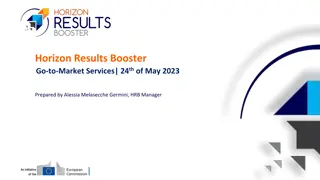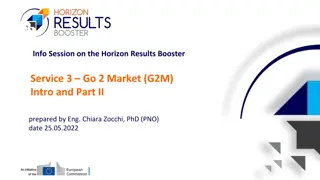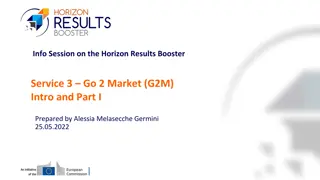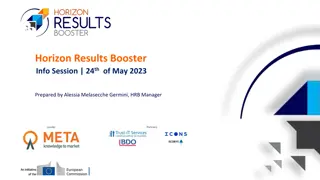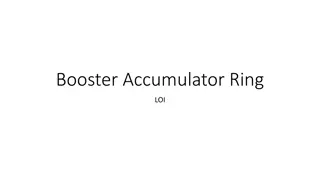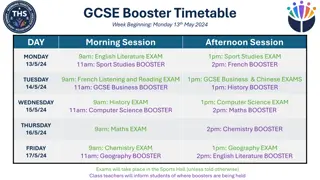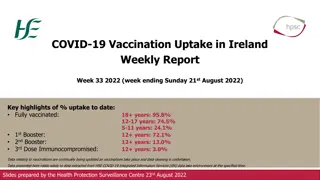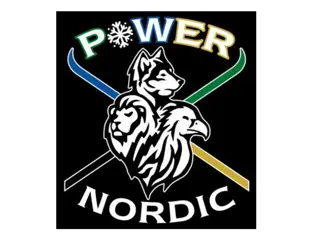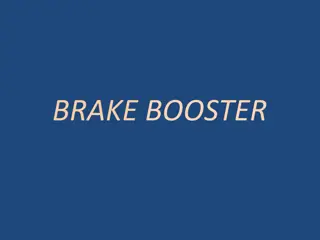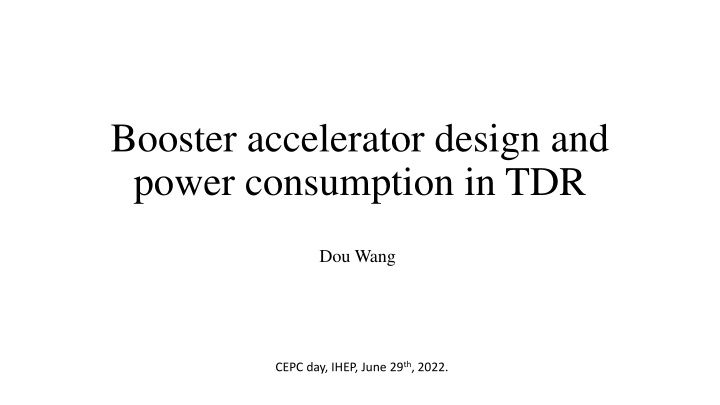
Booster Accelerator Design and Power Consumption in TDR Dou Wang CEPC Day
Explore the booster accelerator design, power consumption, and lattice structure in the context of TDR Dou Wang CEPC Day. Learn about optics parameters, comparison, and power supply consumption in CEPC projects.
Download Presentation

Please find below an Image/Link to download the presentation.
The content on the website is provided AS IS for your information and personal use only. It may not be sold, licensed, or shared on other websites without obtaining consent from the author. If you encounter any issues during the download, it is possible that the publisher has removed the file from their server.
You are allowed to download the files provided on this website for personal or commercial use, subject to the condition that they are used lawfully. All files are the property of their respective owners.
The content on the website is provided AS IS for your information and personal use only. It may not be sold, licensed, or shared on other websites without obtaining consent from the author.
E N D
Presentation Transcript
Booster accelerator design and power consumption in TDR Dou Wang CEPC day, IHEP, June 29th, 2022.
Booster parameters from CDR to TDR Emittance@120GeV: 3.57nm 1.26nm (-65%)
Lattice structure of booster from CDR to TDR FODO cell 90 / 90 FODO length: 101m Noninterleave sextupole scheme TME like structure (cell length=78m) Interleave sextupole scheme Combined magnet (B+S) scheme Phase advance/cell: 100 (H) / 28 (V) TDR CDR
Optics parameter comparison D. H. Ji, W. Kang Lattice FODO 0 CDR TME (combine magnets) Emittance X (nm) @120GeV 3.57 1.26 Tunes [263.201/261.219] [321.271/117.193] Dipole amout 16300 14866 Quad amount 2036 3458 Quad Strength (K1L rms 0.0383 0.0259 Sext amount 512 0 Sexts Strength (K2L rms) 0.179 0.0492 H Corrector 904 1218 V Corrector 904 1218 BPM 1808 2408 Power consumption of magnets@120GeV (MW) (max/average) 15/6 12/4.8 TME is less sensitive to error effects TME has less magnets power consumption Weaker quad/sex strength No independent sextupole for TME Quadrupole strength of TME is lower 4
CEPC CEPC W. Kang CDR CDR TDR 0.4MW TDR 1454 0.4MW 1454 TDR-2022 CDR-2018 BS-63B 16320 376 63 0 0 4700 476 180 295.5 42.3 4.8 0.7 4.82 0.69 BS-63B 10832 376 63 0 0 4700 171 180 295.5 42.3 3.2 0.5 BS-63B-SF 2017 376 63 10.6925 4.0097 4700 476 180 295.5 42.3 0.6 0.1 4.39 BS-63B-SD 2017 376 63 12.7615 4.785525 4700 476 180 295.5 42.3 0.6 0.1 [Gs]@120GeV [Gs]@20GeV [T/m^2]@120GeV [T/m^2]@45GeV [mm] [A]@120GeV [A]@20GeV [W]@120GeV [W]@45GeV [MW]@120GeV [MW]@45GeV [MW]@120GeV [MW]@45GeV 0.63
CEPC CEPC W. Kang CDR CDR TDR 23% 23% 2.63MW TDR 1422 2.63MW 1422 TDR-2022 CDR-2018 BS-63Q-1000L 2036 11.07 4.1527 1000 285 107 5.1 0.7 10.3 1.5 10.34 1.45 BS-63Q-2000L 1144 8.5874 3.2202 2000 171 64 4.0 0.6 4.6 0.6 BS-63Q-1000L 296 8.4832 3.1811 1000 169 63 2.0 0.3 0.6 0.1 7.71 1.09 BS-63Q-700L 2018 8.0209 3.0078 700 160 60 1.3 0.2 2.6 0.4 [T/m]@120GeV [T/m]@45GeV [mm] [A]@120GeV [A]@20GeV [kW]@120GeV [kW]@45GeV [MW]@120GeV [MW]@45GeV [MW]@120GeV [MW]@45GeV
Power consumption of RF power source in TDR Z. S. Zhou
Higgsbooster J. Y. Zhai CDR off-axis 0.5s damping TDR on-axis 5s Higgs Booster TDR CDR 10
Booster power consumption @Higgs The technical systems with changes are considered. Technical system CDR [MW] TDR [MW] Budget increment [MW] max 15 10.04 average 6 4.02 max 12.1 6.62 average 4.8 2.65 max -2.9 -3.42 average -1.2 -1.37 Magnet system Power supply RF system RF power source Beam Instrumentation 3.95 0.6 0.15 0.6 4.45 0.72 1.44 0.72 0.5 0.12 1.29 0.12 total 20.97 19.81 -5.7 -1.16 10
Booster power consumption @Z The technical systems with changes are considered. Technical system CDR [MW] max 2.14 2.48 TDR [MW] max 1.72 1.88 Budget increment [MW] max -0.42 -0.6 average 1.28 0.99 average 0.69 0.75 average -0.59 -0.24 Magnet system Power supply RF system RF power source Beam Instrumentation 0.5 0.6 0.04 0.6 1.13 0.72 0.084 0.72 0.63 0.12 0.044 0.12 total 9.7 9.034 -0.27 -0.666 11




